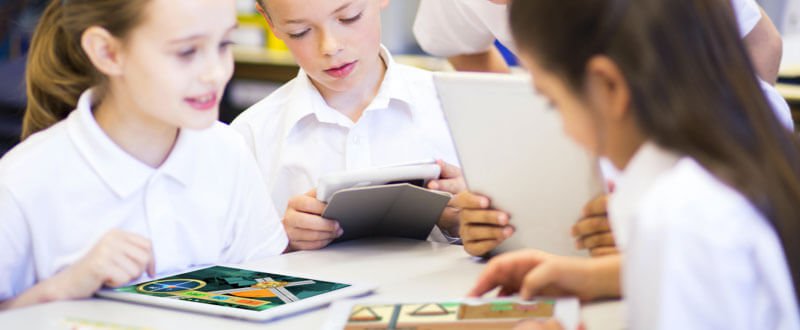
Top 3 Tips for Making Technology Work in the Classroom
Thousands of schools around the globe now have experience with using technology for virtual learning. Despite this experience, using technology well can still be a challenge.
On the one hand, technology offers many benefits. Yet, the human touch is still a crucial element in a quality classroom. As Bill Gates put it, “Technology is just a tool. In terms of getting the kids working together and motivating them, the teacher is the most important.”
How can we make sure that we maximise the benefits of technology?
We’ve put together three essential tips that will help you make technology work well in your classroom:
Tip # 1: If It Worked, Keep Doing It!
If digital practices, resources, and activities worked well during remote learning - take them with you to the classroom as in-person classes resume.
Pro tip: Do a review or some quick interviews with your students to get their feedback on what they liked during virtual learning to inform your decisions about what digital practices to keep.
In a 2020 interview entitled The COVID Lessons: John Hattie Reflects, Laureate Professor John Hattie of the Melbourne Graduate School of Education stated that "as COVID hopefully starts to disappear and we go back to regular schooling - if we don't learn anything from that COVID teaching, I think that's the biggest travesty of this whole year." In other words, take the lessons you learned from remote learning and use them!
“Interactive, targeted, engaging, fun”
- Year 5 teacher
Tip # 2: Use Technology to Facilitate Peer-to-Peer Learning
Once back in the classroom, students get the chance to enjoy peer-to-peer learning again! In mathematics, look for open-ended questions and activities that encourage class discussions and offer students the chance to learn from each other. Technology is the perfect vehicle for this! Here’s how to do it:
Use a Digital Instigator: A digital activity, such as a question to which there may be multiple solutions, can provide excellent content for classroom discussions.
Matific workshops are ideal for this. For example, the “Pull the Strings” episode allows students to build their own necklaces that represent different fractions or ratios. Then, the teacher can ask the class what they have represented, the logical reasoning they used, and what alternative ways to express the fraction or ratio would have been.
Turn Learners into Teachers: As the saying goes, you only really understand something when you can teach it to someone else. After completing a digital activity, ask students to show other students what they learned.
Encourage Questions: Use digital learning as a catalyst for asking students to share questions they have.
“[Matific is] user friendly. It doesn't make students feel bad if they get an answer wrong and provides new ways to answer a question.”
- Year 1 Teacher
Tip # 3: Think About Quality
Parents worry about the quantity of screen time, but research shows that we should also be focusing on the quality. Here are a few ways to be smart with your screen time:
Combine Concrete Manipulatives and Digital Resources: Students can work on Matific content about shapes and also with cut-outs of shapes in real life. Then, they can draw the same shapes in their notebooks.
Use Digital Models: Digital resources can provide students with not just symbolic or even visual representations, but with models that they can not only view but manipulate. This supports learning by bridging the gap between abstract symbolic representation and the real world or the "concrete." Plus, digital manipulatives and models are mess-free and easy for teachers to set up.
Focus on Small-group Instruction: While the teacher focuses on this small group of students, the others who are not working directly with the teacher can continue to learn using an engaging, purposeful digital resource.
Make Learning Fun and Effective: Quality digital maths products provide personalised, adaptive learning that allows students to move at their own pace. They also feature fun, game-like scenarios that encourage discovery and a deep conceptual understanding. Digital resources can often provide immediate feedback for teachers, who can then use the information to better plan their lessons, support students, and help each student achieve their full potential.
“It’s more engaging than other resources. The students are keen to try it and they are of the group that quite like video games, and many boys especially - which they found quite ‘fun’”
- Year 6 teacher
We are certain that excellent digital learning platforms are a pillar of the education of the future, both in and out of the classroom.
Read more Building Number Sense Through Routines